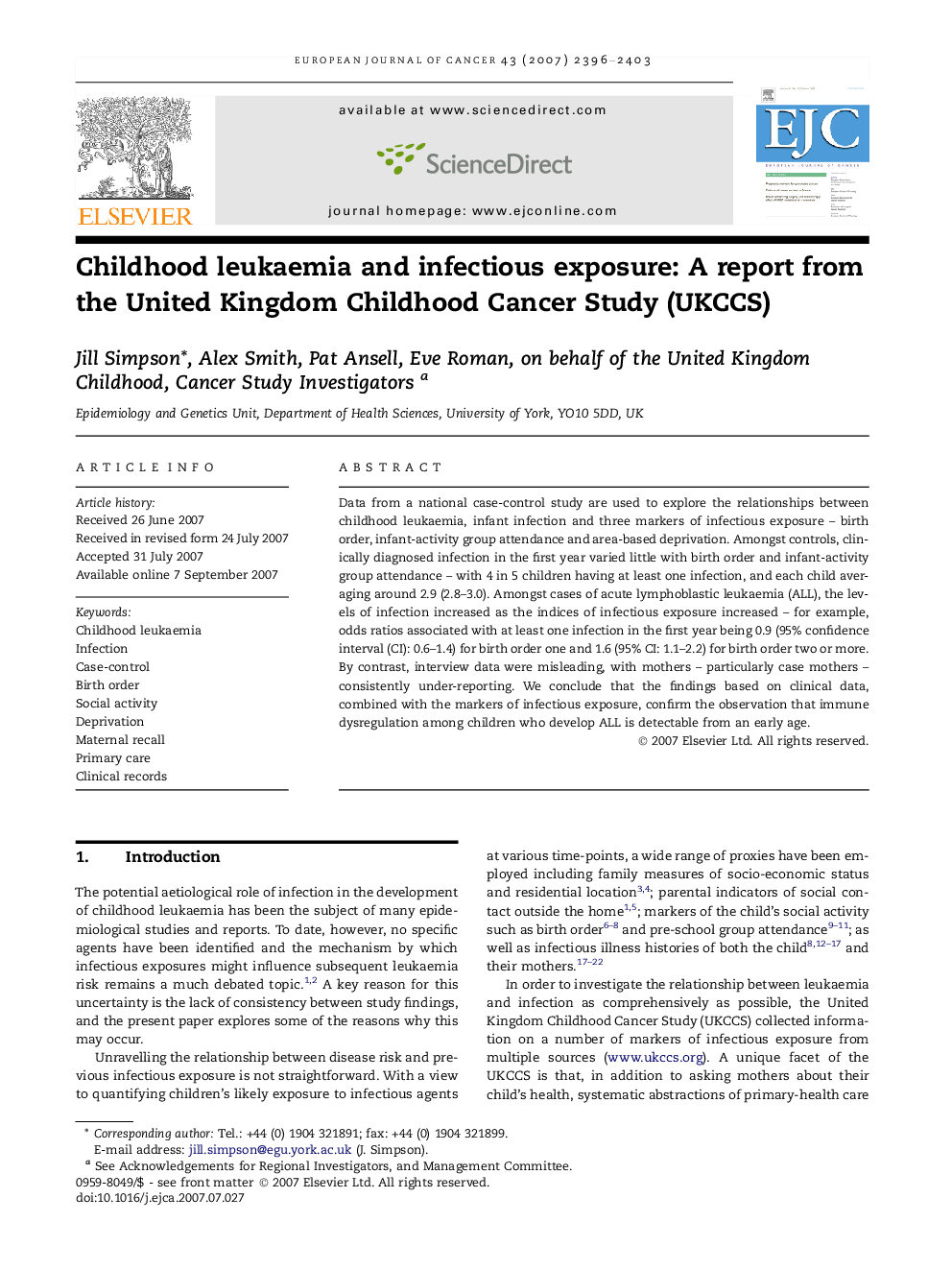| Article ID | Journal | Published Year | Pages | File Type |
|---|---|---|---|---|
| 2125869 | European Journal of Cancer | 2007 | 8 Pages |
Abstract
Data from a national case-control study are used to explore the relationships between childhood leukaemia, infant infection and three markers of infectious exposure - birth order, infant-activity group attendance and area-based deprivation. Amongst controls, clinically diagnosed infection in the first year varied little with birth order and infant-activity group attendance - with 4 in 5 children having at least one infection, and each child averaging around 2.9 (2.8-3.0). Amongst cases of acute lymphoblastic leukaemia (ALL), the levels of infection increased as the indices of infectious exposure increased - for example, odds ratios associated with at least one infection in the first year being 0.9 (95% confidence interval (CI): 0.6-1.4) for birth order one and 1.6 (95% CI: 1.1-2.2) for birth order two or more. By contrast, interview data were misleading, with mothers - particularly case mothers - consistently under-reporting. We conclude that the findings based on clinical data, combined with the markers of infectious exposure, confirm the observation that immune dysregulation among children who develop ALL is detectable from an early age.
Keywords
Related Topics
Life Sciences
Biochemistry, Genetics and Molecular Biology
Cancer Research
Authors
Jill Simpson, Alex Smith, Pat Ansell, Eve Roman, on behalf of the United Kingdom Childhood, Cancer Study Investigators on behalf of the United Kingdom Childhood, Cancer Study Investigators,
